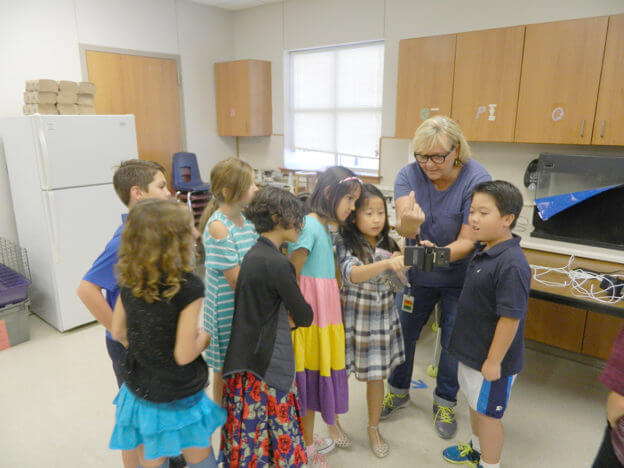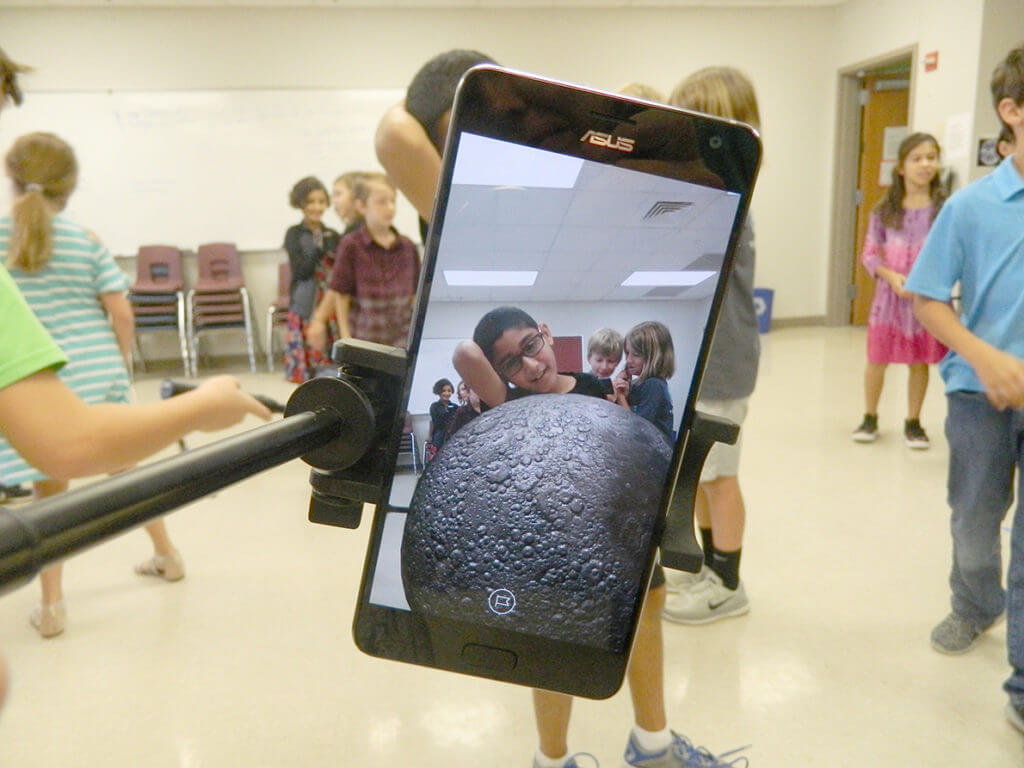
Augmented reality allows virtual images to be superimposed on real images, so that students can remain oriented in reality. Here 4th grader Amal Madapaty leans on a full moon, virtually.
By SARAH DOOLITTLE, Four Points News
Google demonstrated augmented reality technology to students at Laura Welch Bush Elementary a few months ago
“It’s part of the Google Pioneer Expeditions program,” explained 5th grade teacher Kim Tagge. “I first applied a couple of years ago then I found out we got in this year.”
The event on Oct. 5 was hosted in two science labs on campus, and Tagge was on hand all day to assist students and teachers. Google provided phones, selfie sticks, software and an instructor.
The intention of the program is to use augmented reality as another tool to teach various curricula.
“We’re using it today for science,” said Tagge. “(4th graders) are looking at landforms and solar systems. They’re looking at phases of the moon, and our fifth graders are looking at forces of nature, (such as) tsunamis.”
Augmented reality differs from virtual reality in that it superimposes images or objects onto images of reality, as opposed to virtual reality, which immerses the user into an entirely virtual world.
For example, at LWBE students’ phone screens displayed whatever kids were looking at, except with a three-dimensional moon hovering in the middle of the room.
Tagge prefers augmented reality to virtual reality because, “really for kids under the age of ten (VR) is not a good idea because neurologically they’re not developed yet. This makes it accessible without them getting dizzy.”
“It allows them to actually participate in the event without going to an event,” she continued. With augmented reality images, “They can see how a tornado is formed or how tectonic plates move.”
Students seemed excited to try the technology, wandering around the room interacting with their phones and each other while observing firsthand the phases of the moon.
“I think it’s really cool, because we can see the moon;” said Elise Zhou from Kathryn Finley’s 4th grade class. “It’s like it’s right in front of us.”
For Finley, she appreciated this new way of introducing science concepts to her students.
“They’re very engaged in what we’re doing, and that’s always exciting for me. They can be up and moving and exploring and really understanding the different phases of the moon,” she said.
Tagge marveled at how quickly students adapted to the technology, noting that augmented reality games are already a part of the kids’ lives. “It’s their world. It’s Pokemon Go Science… This is their reality,” she said.
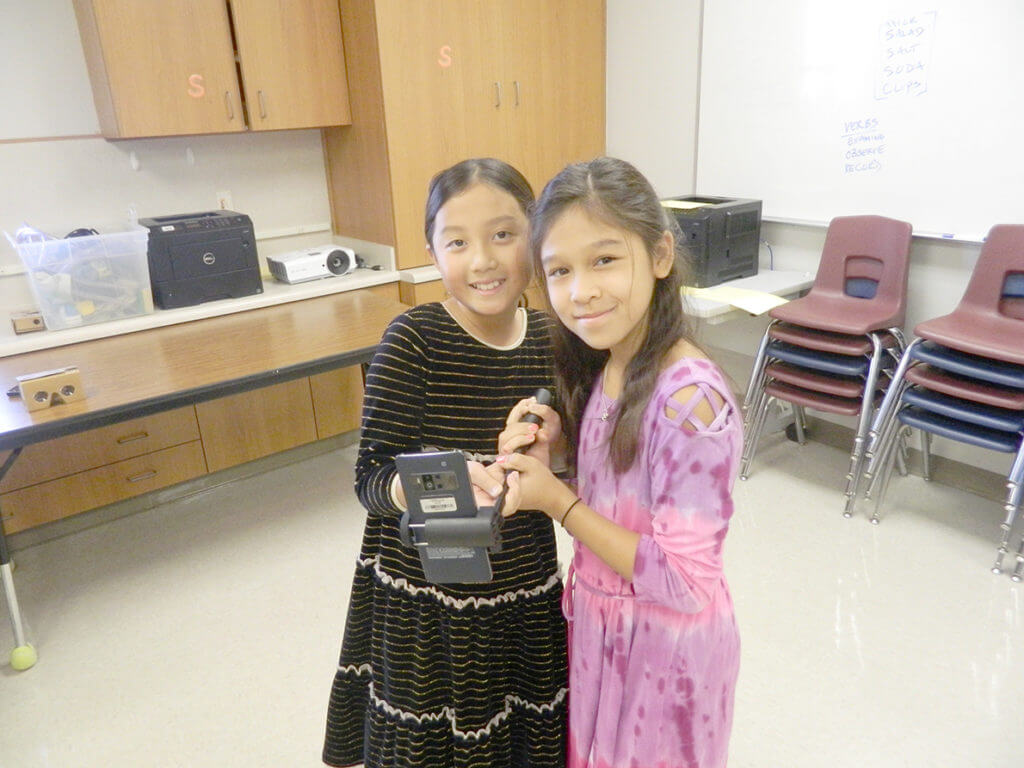
4th graders Elise Zhou and Skyler Green used this phone and selfie stick to better understand the phases of the moon through augmented reality
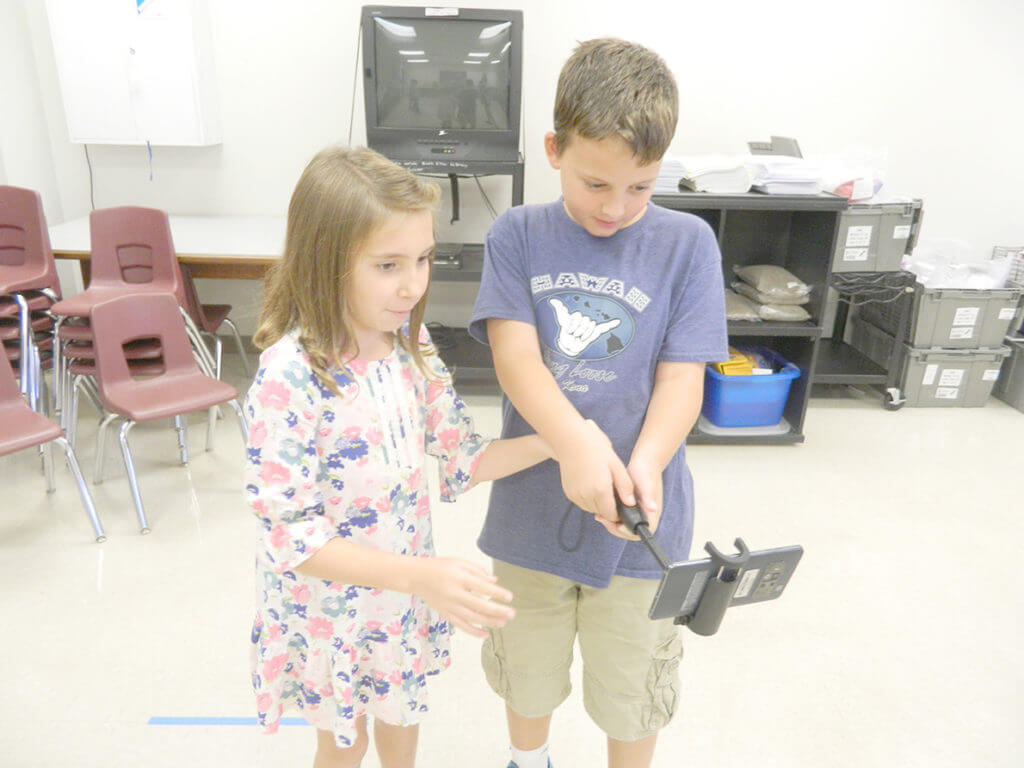
Paige Richards and David Murrell, 4th graders in Kathryn Finley’s class at LWBE, see the phases of the moon in three dimensional augmented reality images on a phone screen during a Google Pioneer Expeditions event in October.
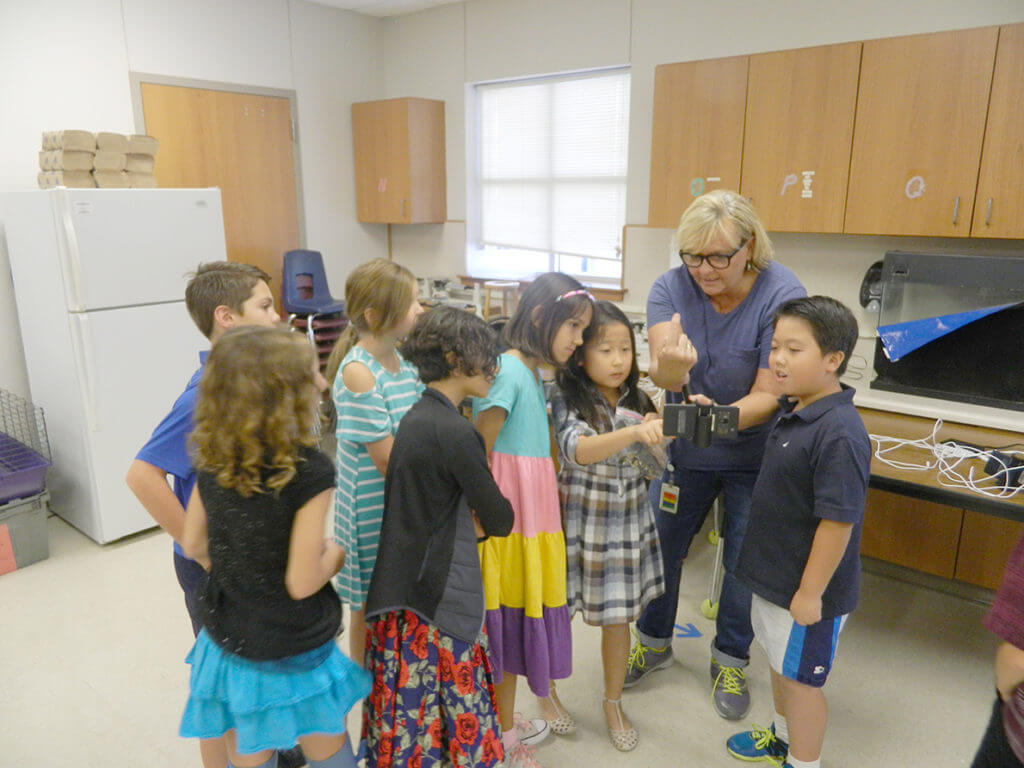
5th grade teacher Kim Tagge shows 4th graders how to view and understand augmented reality images onscreen at a Google tech event at LWBE.

